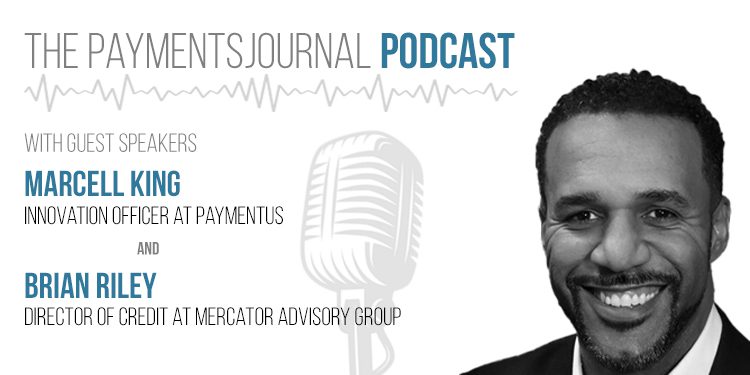Fintech applications are taking the lead in digitization of the bill pay space. They now offer improvements in digital bill viewing and bill payment over what banks have traditionally offered. For these reasons, many customers are paying billers directly through fintech applications.
In a recent PaymentsJournal podcast, Marcell King, Chief Innovation Officer at Paymentus, and Brian Riley, Director of Credit at Mercator Advisory Group, discuss how electronic bill payment and presentment (EBPP) technology is filling market gaps and creating new opportunities for banks, credit unions, and fintechs. To retain their customers, banks need to compete with fintechs directly on EBPP technology. Or they need to partner with them to stay competitive.
Electronic Bill Payment and Presentment
EBPP systems are used by companies and service providers to move their paper billing systems online. Presentment is the action of presenting bills electronically to customers instead of a paper copy. And once customers are presented with their bills online, they can pay them electronically.
Using EBPP systems helps increase efficiency and convenience in customer service. The systems allow for sending digital notifications to customers and enables customers to pay through a variety of means, including credit cards, debit cards, or wires. Some systems also enable payment plans, and micro-loans via buy now, pay later options. Many industries have integrated EBPP systems, including healthcare and governmental agencies.
Traditionally, payment presentation and processing involved separate platforms. “Paymentus is the first and only integrated real-time digital bill pay presentment and money movement platform on the market,” said King. “When we bring those two technologies together, it’s a complete solution that allows institutions to take advantage of not only bill pay and presentment, but also peer-to-peer capabilities, external transfers, loan payments, and new account funding.”
The Advantage of EBPP for Consumers
“When you think about it from a consumer perspective, consumers are looking for simplicity, convenience, speed, and transparency in a traditional digital bill pay market within the banking space,” said King. “[If you’re] paying via a bank checking account, a bill is sent in the mail, and it’s going to take two to ten days to get received by the biller. With an EBPP, payments are almost instantaneous.”
Another key advantage is the flexibility it provides. “You get the convenience and control of getting to choose your preferred payment method,” said King. “If a credit card offers three points for every dollar spent, you’re going to pay your bills with that card.”
EBPP also helps consumers stay organized. Consumers have many bills and many cards to keep track of, all with different due dates. “An EBPP allows consumers to aggregate all of their financial obligations and also pay them in real time with their favorite credit card or debit card, which obviously drives more engagement for the consumer,” said King.
The Benefits of Collaborating With Fintechs
Teaming up with fintechs that offer EBPP solutions can be helpful to many financial institutions.
An EBPP service can help drive more consumer engagement at banks and credit unions. “If your consumers are engaging with your services, there is a stickiness to that. By bringing this convenience factor, by bringing them choice, by giving them the ability to make those payments in real time, it’s going to help drive engagement,” said King.
“[What’s more], by giving consumers the ability for bill payment with their credit card or their debit card, that helps the financial institution actually drive interchange revenue and provide top-of-wallet control that institutions are looking for,” he added.
Financial institutions can also leverage data from the EBPP to personalize customer service and generate more profits. For instance, Bill Center(SM) from Paymentus centralizes customers’ financial obligations in a single bill management hub. It delivers through the financial institution’s app, creating a unique window into their financial lives.
“Bill Center allows the consumer to aggregate not just their traditional bills, but also what we call their offline bills — like certain subscriptions,” said King. “With that comes a plethora of data that the financial institution can leverage for cross-selling. They can use customers’ payment history to understand the overall consumer financial health. That gives them the opportunity to potentially underwrite credit for short-term loans.”
According to Riley, stickiness and engagement is really important for financial institutions to focus on. “As a financial institution, you’ve got to be more than a one-trick pony just focused on taking deposits and giving out credit cards,” he said. “It’s about being involved in the whole life cycle of a customer. The most important thing for the consumer and the financial institution is being able to integrate the EBPP process. Also, they make sure it’s not a cluttery mess.”
To learn more about Paymentus Banking & Fintech Solutions, please visit Paymentus.com/banking-fintech.










